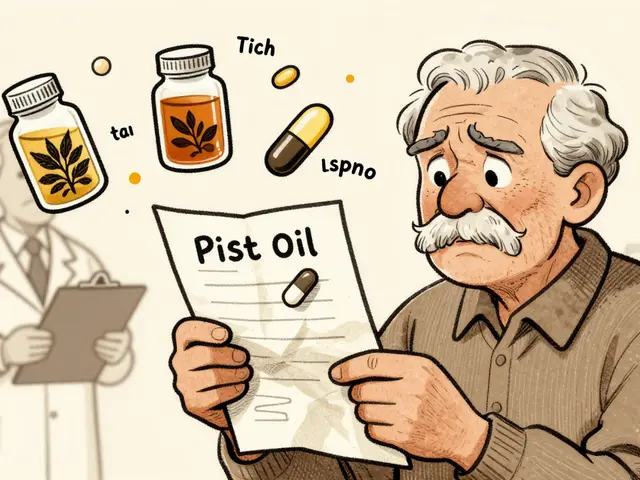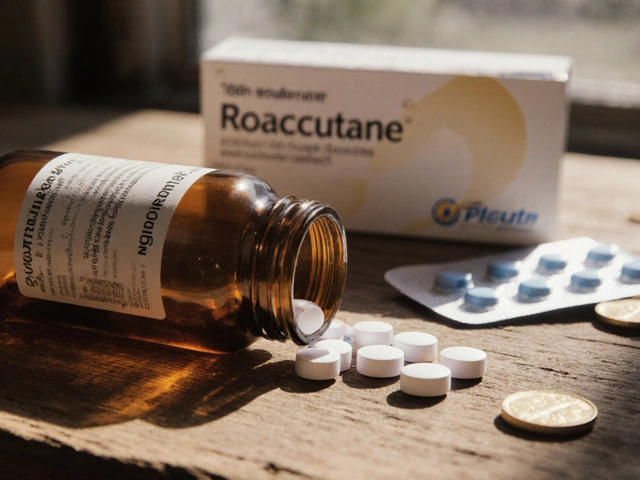Imagine you need to start a blood thinner, and your doctor hands you two options: the old classic Coumadin (warfarin) and one of those shiny, newer DOACs, like Eliquis or Xarelto. Both stop dangerous blood clots but play by different rules—and the wrong choice can seriously mess with your life. You want to keep your blood flowing while keeping those hospital visits (and scary side effects) away. So which should you trust with your next decade? Spoiler: The answer isn’t just in the pill, but in your own story.
How Coumadin and DOACs Actually Work
Warfarin—sold as Coumadin—has kept hearts and legs free from clots since the 1950s, when scientists first realized rat poison could save lives in the right dose. It works by blocking vitamin K in your liver that helps make clotting factors, which means your blood won’t clump up when you don’t want it to. But it’s touchy. Eat too much kale or take the wrong supplement, and your warfarin dose swings out of control. You need regular blood checks (INR tests) to make sure your blood isn’t too thin or too thick. That means monthly trips to the clinic, sometimes more.
DOACs—Direct Oral Anticoagulants—are newer: names like Eliquis (apixaban), Xarelto (rivaroxaban), Pradaxa (dabigatran), and Savaysa (edoxaban). Instead of messing around with vitamin K, they go straight to the troublemakers: factor Xa or thrombin. They work within hours, don’t need regular blood tests, and usually aren’t thrown off by what you eat. For most people, DOACs have replaced warfarin for atrial fibrillation (AFib) and blood clots in the legs (DVT) or lungs (PE).
But it’s not a simple swap. Your body, other medications, and even your insurance might have a say in what you can take. Knowing the nuts and bolts of how these drugs work highlights why one-size-fits-all rarely works with blood thinners.
Risk Profile: Who Gets Which Drug and Why?
Your own risk profile—think kidney function, age, other prescriptions, bleeding history—decides how safe each option actually is. Coumadin is the tried-and-true champ for rare conditions like mechanical heart valves or valvular AFib—no DOAC gets approved for those. But Coumadin is also recommended if you have serious kidney disease. The reason? DOACs rely on your kidneys to clear the drug, so bad kidneys can turn a safe dose into overload.
For everyone else, DOACs are the crowd-pleasers. In big trials (like ARISTOTLE and RE-LY), people using DOACs had fewer brain bleeds than those on warfarin, and at least the same or lower risk of stroke or systemic clots. The real draw for patients? No food restrictions, few drug interactions, and zero INR labs. But there are catches. DOACs are expensive—think hundreds of dollars a month if you’re uninsured. Plus, missing even one dose leaves you unprotected, because the drugs clear out of your system in a day or two.
Age is a wildcard. Folks over 75 are more likely to end up with bleeding problems, no matter the drug. But studies show DOACs—especially apixaban—work better than warfarin for these patients in both preventing clots and causing less dangerous bleeding. If you have cancer, recent research suggests DOACs are as safe and effective as low molecular weight heparins, which used to be the gold standard.
For more about how to match your risk to your medication, check out the best alternatives to Coumadin—this post runs through scenarios where switching makes sense.

INR Monitoring: Big Hassle or Crucial Safety Net?
Here’s the kicker: warfarin’s need for INR checks is both a curse and a (weird) safety feature. With Coumadin, you get a clear number every month—a precise INR target between 2 and 3 for most uses. If you slip off target, your team fixes it fast. If a bleed or a clot does happen, you’ll probably know before it turns catastrophic. But regular INR checks mean lost hours, finger sticks, and clinics. Plus, a wacky diet, new meds, or even a cold can push your INR out of range. About one in three people on warfarin spend at least a quarter of their time outside their target INR—the sweet spot for safety shrinks if life gets complicated.
DOACs skip all that testing. That’s liberating, sure, but also a gamble. If you miss a pill or your kidneys slow down without you noticing, you won’t get a warning. There’s no easy blood test to see if you’re protected—or at risk—for a clot or a bleed. Some hospitals monitor drug levels during emergencies, but that’s not routine care.
So how should you think about monitoring? For people who hate blood draws, can’t get to a lab (or travel a lot), or struggle with complicated routines, DOACs feel like a blessing. For perfectionists—or people whose health changes a lot—warfarin’s backup testing provides peace of mind.
Reversal Agents: What If You Bleed?
Every anticoagulant carries a bleeding risk. It’s the trade-off for clot prevention. But what if things go wrong? For decades, warfarin was the winner here. Hospitals could reverse Coumadin instantly with vitamin K and plasma or prothrombin complex concentrates. In bad bleeding, doctors know precisely the steps: vitamin K shot, factor replacement, check INR, repeat until safe.
DOACs were trickier—until recently. Now, there are specific reversal agents: idarucizumab for dabigatran (Praxbind), andexanet alfa for factor Xa inhibitors like apixaban and rivaroxaban. Not every ER stocks these, though, and each shot can cost over $25,000. For minor bleeds, stopping the DOAC plus a few days of normal care is usually enough—the drug disappears quickly. With warfarin, slower reversal means even a small head injury can become deadly. Still, in massive bleeds or urgent surgery, access to a reversal agent can be the difference between recovery and disaster.
Here’s a quick comparison of reversal approaches:
| Drug | Standard Reversal | Specific Antidote | Onset of Reversal |
|---|---|---|---|
| Warfarin | Vitamin K + PCC or FFP | N/A | 4-24 hours |
| Dabigatran (Pradaxa) | PCC occasionally | Idarucizumab | Minutes |
| Apixaban/Rivaroxaban (Eliquis/Xarelto) | PCC | Andexanet alfa | Minutes |
Treating bleeding on these drugs isn’t a DIY job; you need a hospital’s help. But knowing what’s out there changes the fear equation. Ask your doctor if your hospital carries these antidotes—especially if you’re on a DOAC.

Making the Switch: Tips and Real-World Survival Tricks
So you’re leaning one way—and ready to talk with your doc. Before switching, ask yourself:
- Are you good at taking pills every day, without fail?
- Do you have major kidney issues, or a mechanical heart valve?
- What’s your insurance like? Will they cover pricey DOACs?
- Do you have a history of unpredictable bleeding?
- How do you feel about regular lab visits?
If DOACs win out, set a daily phone alarm for dosing. Put sticky notes on your coffee maker. Missing even one dose raises your clot risk. Traveling? Pack extra pills in both your suitcase and carry-on. For Coumadin fans, use a calendar or an INR tracking app. Keep a list of foods high in vitamin K and try to eat the same amount each week—not too much, not too little.
Let’s break down some practical tips for both options:
- On Coumadin? Get your INR tested right before vacations. Carry a card that lists your current dose and last INR.
- On DOACs? If you mess up a dose and it’s within a few hours, take it. If you’re way late, just wait for the next scheduled time—don’t double up.
Ask your doctor about drug interactions—common offenders are antibiotics and antifungals for DOACs, and a huge range for Coumadin. Alcohol? Both drugs raise the stakes. Stick to small amounts, or skip it. And always watch for new bruising, black stool, or bleeding gums, and call your doc fast if you spot these signs.
Wondering how real people do on these meds? In large reviews, people switching from Coumadin to DOACs see fewer ER visits and missed clinic appointments—not to mention less anxiety about dinner salads. But those with strict routines and support crews often do just fine on warfarin, too. It’s about what fits your life, not just your labs.
When in doubt, team up with your care provider. The best medication is the one you take right, every day, that doesn’t turn you into a regular customer at the ER. There’s no single winner—but there is a solution that’s a better fit for you and your risks.









Warfarin still has its place for people with mechanical heart valves. If you have serious kidney problems, staying on Coumadin is safer because the newer DOACs rely on kidney clearance.
First, recognize that the decision isn’t just about pills, it’s about daily habits and the support network you have. Think about how often you can get to a lab; if monthly INR draws feel like a burden, a DOAC might free you from that routine. On the other hand, if you’re diligent with medication timing and enjoy the reassurance of a concrete lab number, warfarin can give you that safety net. Consider your diet – if kale salads and leafy greens are staples, the dietary swings of Coumadin could be tricky, whereas DOACs let you eat without fearing a sudden INR spike. Look at your kidney function labs; a reduced eGFR nudges the scales toward warfarin because the kidneys can’t clear the DOAC efficiently. Age matters too; patients over 75 often see fewer bleeding events on apixaban compared to warfarin, but each individual’s bleeding history should guide the choice. Insurance coverage is another practical layer – if your plan puts a hefty co‑pay on the DOAC, the out‑of‑pocket cost might outweigh the convenience. Talk to your pharmacist; they sometimes have patient‑assistance programs that lower the price of brand‑name DOACs. If you travel a lot, pack extra pills and a simple alarm on your phone; missing even one dose of a DOAC can leave you unprotected quickly. For Coumadin fans, use an INR tracking app that sends you reminders when your next test is due, and keep a food diary to spot vitamin‑K spikes. Remember drug interactions – antibiotics like ciprofloxacin can boost warfarin levels dramatically, while certain antifungals affect DOAC metabolism. Alcohol intake should be modest with either drug; heavy drinking amplifies bleed risk for both. If you have a mechanical heart valve, the guidelines are clear: warfarin remains the gold standard because DOACs are not approved for that indication. For patients with atrial fibrillation and no valve issues, the large ARISTOTLE and RE‑LY trials showed DOACs reduce intracranial hemorrhage rates. Lastly, involve your loved ones – a caregiver who can help you keep a pillbox organized can make a huge difference in adherence regardless of the medication you choose.
Both drugs have pros and cons and the right choice depends on personal health factors.
Don’t be fooled by the glossy marketing that paints DOACs as a risk‑free miracle; every anticoagulant carries a bleeding danger, and the convenience factor can breed complacency. When you skip a single dose of a DOAC, the protective cushion evaporates within 24‑48 hours, leaving you vulnerable to a clot at a moment’s notice. Warfarin, while demanding regular INR checks, offers a visible safety net you can adjust in real time, something a quick lab draw can’t replicate. The high price tag of DOACs isn’t just a financial issue – it influences adherence, especially for patients without robust insurance, and cost‑cutting often leads to missed refills. Moreover, the reversal agents for DOACs, such as andexanet alfa, are astronomically expensive and not universally stocked, which can turn a minor bleed into a life‑threatening emergency. You also have to consider drug‑drug interactions; many antibiotics and antifungals can dramatically raise DOAC levels, and patients often aren’t aware of these hidden hazards. The “no monitoring” claim is a double‑edged sword; without periodic labs, subtle changes in kidney function can go unnoticed until a serious event occurs. If you have a history of variable diet or inconsistent medication timing, warfarin’s ability to be tweaked based on INR readings may actually provide more stability. Ultimately, the choice should be guided by a comprehensive review of your medical history, not just a desire for convenience.
It’s funny how the big pharma machines push DOACs as the latest cure‑all while quietly lobbying to keep the expensive reversal kits out of most hospitals. They want us to think we’re saving money by avoiding lab visits, yet the hidden costs – like the $25,000 price tag for andexanet alfa – end up shouldering the healthcare system. Meanwhile, the tried‑and‑true warfarin has been around for decades, and doctors know exactly how to manage its quirks. Don’t be naive; read the fine print on those glossy brochures and ask your provider about real‑world outcomes, not just trial headlines. The truth is, both drugs can work, but the system’s profit motives sometimes shape the narrative more than science.
From a philosophical standpoint, the selection between Coumadin and a DOAC embodies the broader tension between tradition and innovation in medicine. While empirical evidence guides us, the ethical imperative to respect patient autonomy necessitates transparent discussion of risks, benefits, and socioeconomic constraints. One must weigh the epistemic value of regular INR monitoring against the pragmatic liberty offered by a fixed‑dose regimen. Ultimately, the optimal therapeutic pathway emerges from a synthesis of clinical data, individual lived experience, and the moral duty to minimize harm.